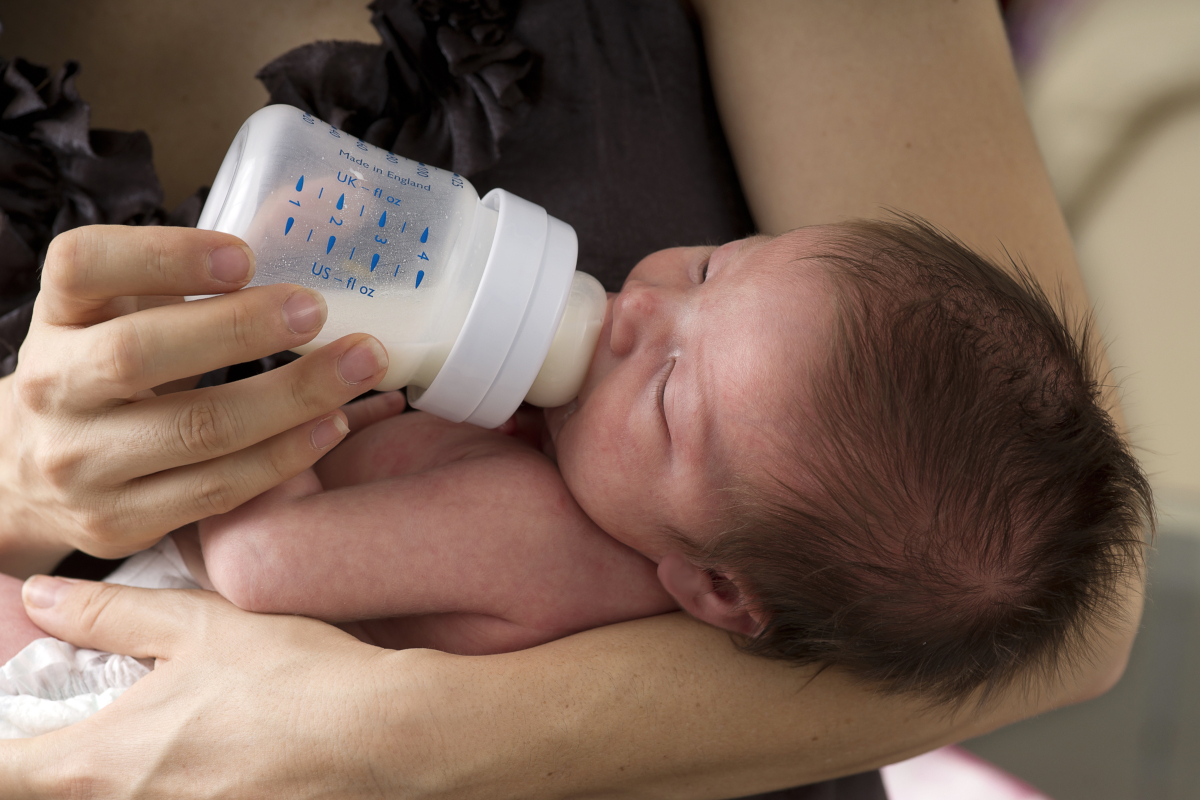The Medical Minute: Choosing the right baby formula

Baby formulas come in vibrant containers, adorned with pictures of stuffed toys and adorable infant faces. They carry all sorts of brand names, labels and initials. So, how can parents know which one is right for their baby?
It turns out, choosing may not be so difficult. That’s because all formulas sold in the U.S. follow standard guidelines from the Food and Drug Administration (FDA). “That means they have the appropriate balance of protein, carbohydrates, fat and other ingredients to ensure infants receive proper nutrition,” said pediatrician Dr. Katie Shedlock with Penn State Health Children’s Hospital.
Still, parents should know some important differences.
First, formula is different from breastmilk, which is easier for babies to digest and offers more benefits. “Breastfeeding helps protect infants from pneumonia, ear infections, eczema and even sudden infant death syndrome (SIDS),” Shedlock said. It also reduces the risk for babies developing conditions such as diabetes and obesity later in life. Sometimes, however, moms can’t produce enough breastmilk to feed their infant, or they may simply choose to use formula instead.
The most common type of formula sold in the U.S. (about 80%) uses cow’s milk as the main ingredient. “It tends to be tolerated well by most infants, and it’s the most economical choice,” said Nancy McDaniel, a lactation consultant at the Children’s Hospital.
However, some infants – potentially up to 15%, according to research – develop a milk protein allergy and therefore can’t tolerate cow’s milk-based formula. In those instances, experts recommend using an extensively hydrolyzed formula, which breaks down cow’s milk protein into smaller, more easily digestible particles. Hydrolyzed formulas tend to be more expensive than their cow’s milk counterparts.
Another option, soy-based formula, is rarely recommended. It is used specifically when an infant is born with a condition called galactosemia, which is when a baby can’t metabolize a simple sugar called galactose.
Some formulas boast of additives such as prebiotics and probiotics. Those formulas tend to be more expensive. Are they better for baby? “Research has yet to determine whether they are beneficial for infants,” Shedlock said. And while parents gravitate toward their favorite formula brands, the reality is that store-brand formulas are nearly identical to their name-brand counterparts.
Experts advise parents stay away from foreign-made formulas. Some promise to be “organic” or “natural,” but they don’t follow FDA standards. And homemade formulas are always a no-no.
Parents may perceive infants are gassy or spitting up due to their formula, but that is rarely the case. “Gas, spit-up and minor changes in stool are normal in newborns. They are learning how their body works, so if they seem uncomfortable with gas, it may just be frustration,” Shedlock said. A distended stomach or bloody stools are more concerning symptoms. Parents concerned about their infant’s digestive issues should see their pediatrician.
To help a baby digest formula easier, always follow the mixing directions on the container. “Resist the urge to make the formula thicker or thinner,” McDaniel said. Don’t use spring water. And never heat up a baby bottle in a microwave.
A popular and newer feeding technique—called paced bottle feeding—also may help reduce an infant’s gas and fussiness. It involves placing the bottle horizontal to the baby. “Traditional bottle feeding, with the bottle held upright, forces a baby to swallow faster and harder, which brings in much more air,” McDaniel said. The paced approach allows the baby to swallow slower and therefore inhale less air.
Parents seeking additional guidance on formula and feeding techniques can visit the HealthyChildren.org website run by the American Academy of Pediatrics. They also can get resources at their local Women, Infants and Children (WIC) office.
Related content:
- The Medical Minute: Will I need a C-section with my second child?
- The Medical Minute: Despite warnings, unsafe infant sleep practices persist
The Medical Minute is a weekly health news feature produced by Penn State Health. Articles feature the expertise of faculty, physicians and staff, and are designed to offer timely, relevant health information of interest to a broad audience.
If you're having trouble accessing this content, or would like it in another format, please email Penn State Health Marketing & Communications.
